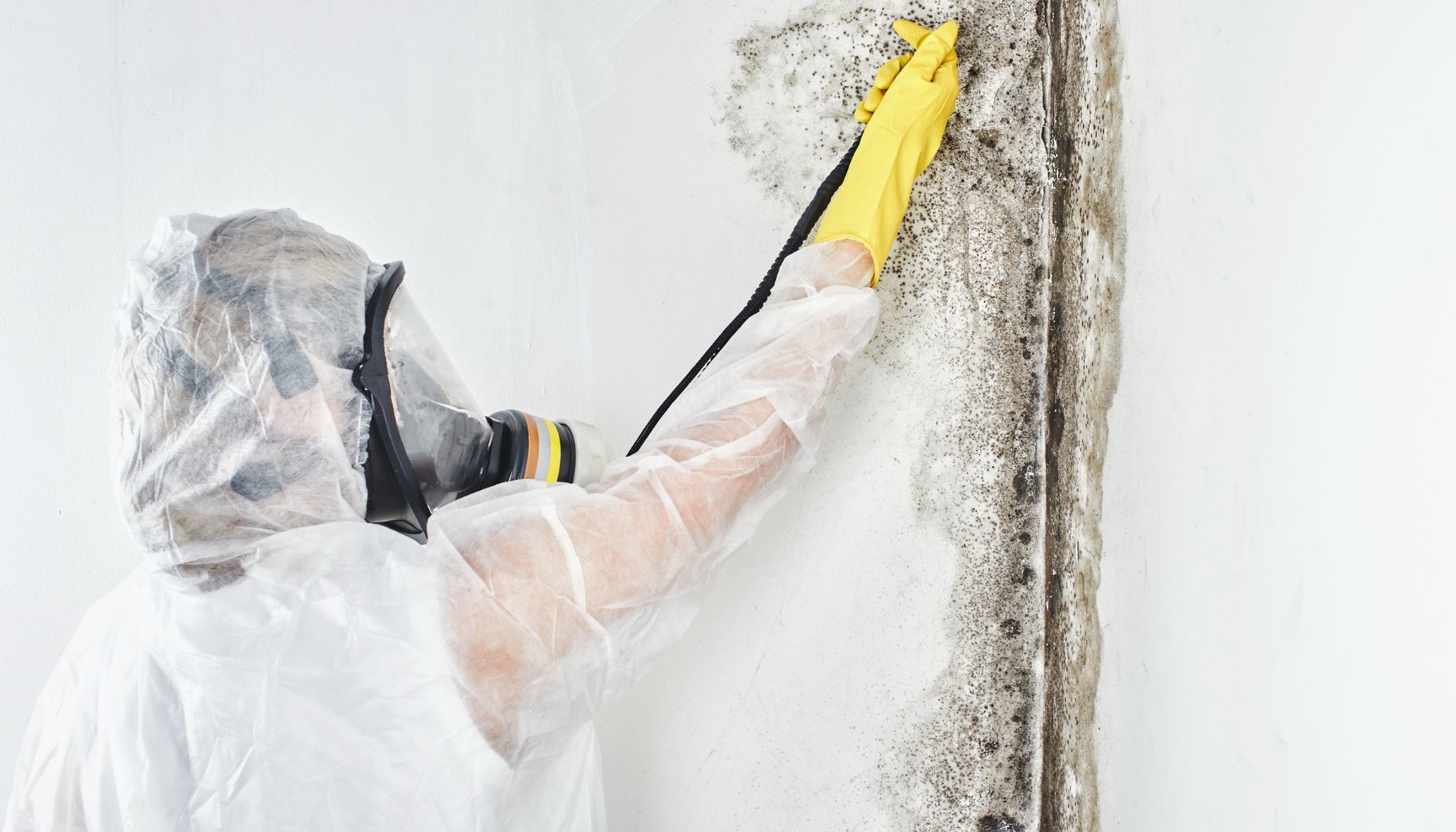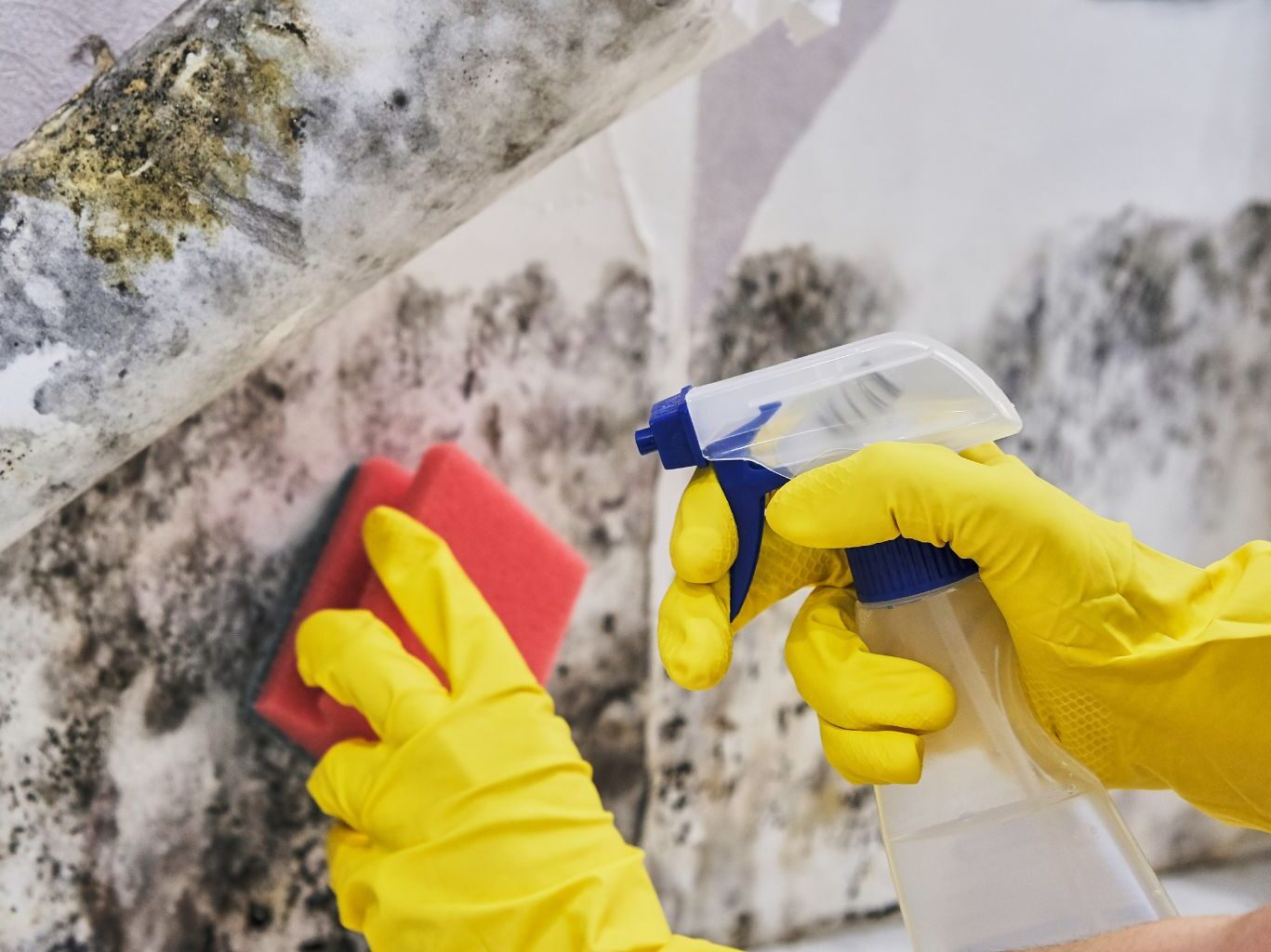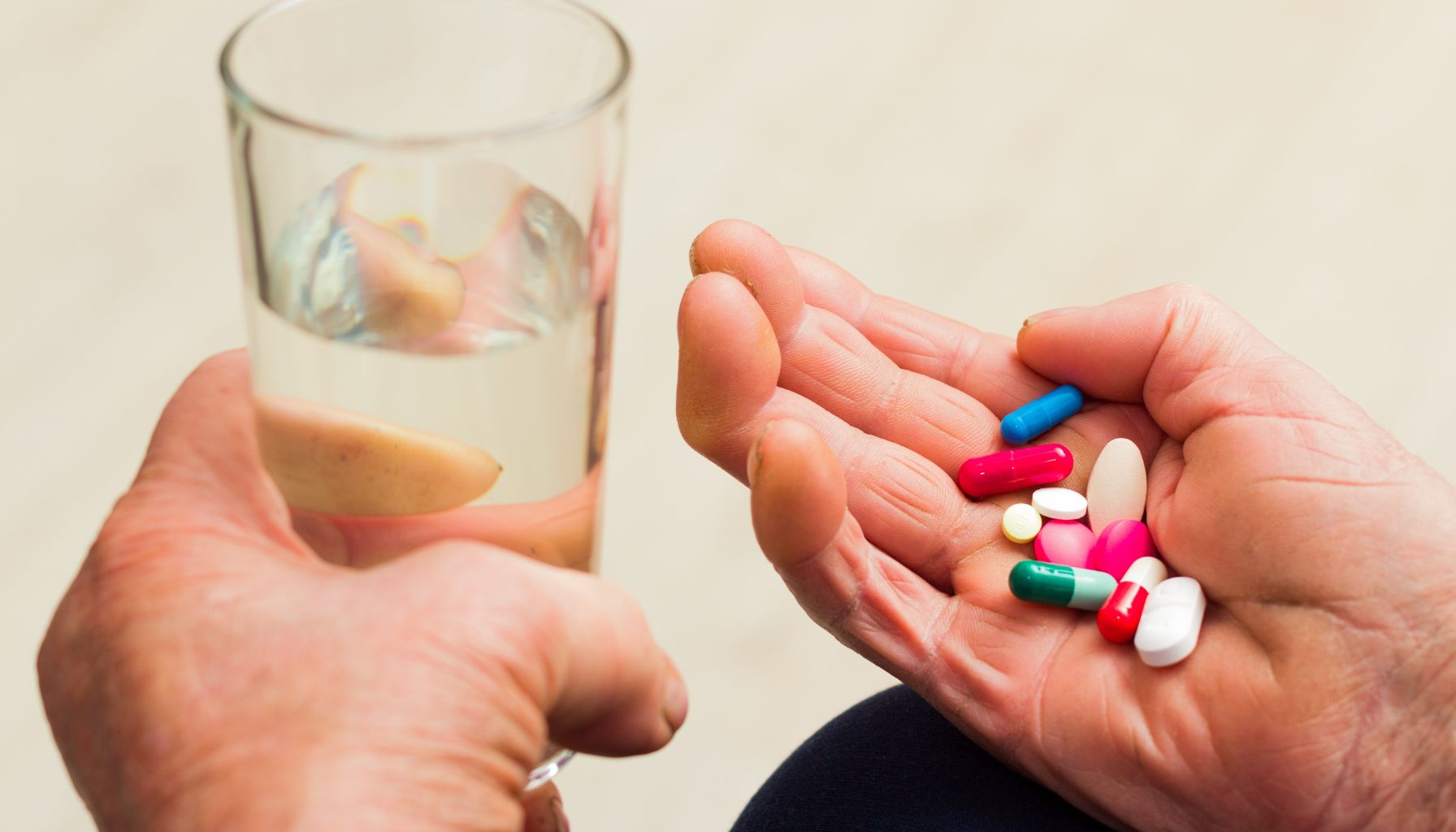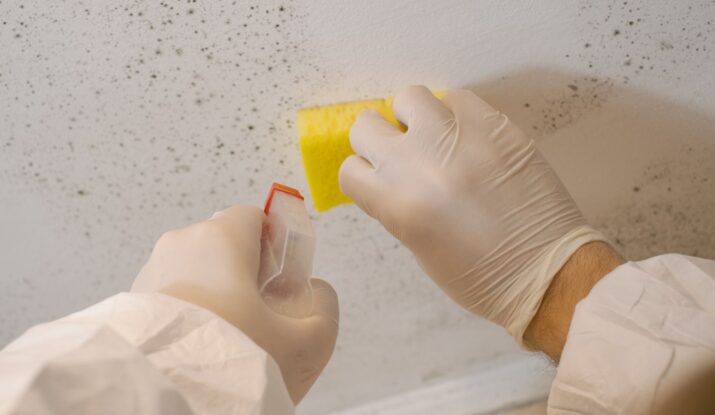Understanding these differences allows you to properly address mold issues in your home or building
In the battle against mold, it’s crucial to understand the difference between mold damage restoration and mold remediation
Both terms are often used interchangeably, but they actually refer to two distinct processes. Mold damage restoration focuses on repairing and restoring the areas affected by mold, while mold remediation focuses on eliminating the mold at its source and preventing its future growth. By understanding these differences, you can make an informed decision on how to properly address mold issues in your home or property.
Defining Mold Damage Restoration
Explanation of Mold Damage Restoration
Mold damage restoration refers to the process of repairing and restoring areas that have been affected by mold growth.
It involves removing the mold, remedying the cause of the mold, and repairing any damage caused by it. The goal of mold damage restoration is not only to eliminate the visible mold but also to ensure that the affected area is thoroughly cleaned and restored to its pre-damage condition.
When is Mold Damage Restoration Required?
Mold damage restoration is necessary when mold growth is discovered in a residential or commercial property. Mold can grow in various places, including walls, ceilings, floors, and even furniture. If left untreated, mold can cause structural damage to the property and pose health risks to the occupants. Therefore, it is crucial to initiate a professional mold damage restoration service as soon as possible to prevent further damage and ensure a safe environment.
Overview of the Mold Damage Restoration Process
The mold damage restoration process typically involves several steps. First, the affected area is carefully inspected to determine the extent of the mold growth and the underlying cause. Once the source of moisture is identified, it is addressed to prevent future mold growth. Next, specialized equipment is used to contain and remove the mold, ensuring that it does not spread to unaffected areas. The cleaned area is then dried thoroughly, and any damaged materials are repaired or replaced. Finally, the area is sanitized to eliminate any remaining mold spores and to prevent future growth.
Importance of Mold Damage Restoration
Mold damage restoration is essential for several reasons. Firstly, it helps to ensure the safety and well-being of the occupants by eliminating potential health hazards associated with mold exposure. Mold spores can cause allergies, respiratory issues, and other health problems. Secondly, mold damage restoration prevents further structural damage to the property. Mold can weaken building materials and compromise the integrity of the structure if left untreated. Lastly, mold damage restoration helps to maintain the aesthetic appeal and value of the property by restoring it to its pre-damage condition.
Defining Mold Remediation
Explanation of Mold Remediation
Mold remediation refers to the process of removing, cleaning, and preventing the recurrence of mold growth in a property. Unlike mold damage restoration, which focuses on repairing the damage caused by mold, mold remediation primarily focuses on the elimination and prevention of mold. The objective is to create a safe and mold-free environment by removing the mold source and taking necessary measures to prevent its reoccurrence.

When is Mold Remediation Needed?
Mold remediation is necessary when mold growth is present in a property. It can be required in both residential and commercial settings. Mold can thrive in areas with high humidity, moisture, and inadequate ventilation, such as bathrooms, kitchens, basements, and attics. If left unaddressed, mold can spread rapidly and pose health risks to occupants. Therefore, it is crucial to initiate mold remediation promptly to prevent further contamination and maintain a healthy indoor environment.
Overview of the Mold Remediation Process
The mold remediation process typically involves several stages. It begins with a thorough inspection to assess the extent of the mold growth and identify the underlying cause. Once the source of moisture or humidity is identified and addressed, the mold is carefully removed using specialized techniques and equipment. The affected area is then thoroughly cleaned and sanitized to ensure that all mold spores are eliminated. Finally, preventive measures are taken to ensure the long-term prevention of mold growth.
Importance of Mold Remediation
Mold remediation is vital for several reasons. Firstly, it helps to protect the health and well-being of the occupants by removing mold and preventing its spread. Mold spores can cause respiratory issues, allergies, and other health problems, especially for individuals with pre-existing conditions or weakened immune systems. Secondly, mold remediation prevents further damage to the property’s structure and contents by eliminating the source of mold growth. Lastly, mold remediation helps to preserve the value of the property and create a safe and comfortable living or working environment.
Comparing Rationale behind Mold Damage Restoration and Mold Remediation
The Purpose of Mold Damage Restoration
The primary purpose of mold damage restoration is to restore areas that have been affected by mold to their pre-damage condition. This involves not only removing the visible mold but also repairing any damage caused by it, such as replacing damaged drywall, flooring, or other affected materials. Mold damage restoration aims to eliminate the mold source, remediate any moisture or humidity issues, and ensure that the property is safe and habitable once again.
The Purpose of Mold Remediation
The main purpose of mold remediation is to eliminate and prevent the recurrence of mold growth in a property. While mold damage restoration focuses on repairing the damage caused by mold, mold remediation focuses on the complete removal of mold and its source. The goal is to create a mold-free environment by addressing the underlying causes of mold growth, such as moisture or humidity issues, and implementing preventive measures to minimize the chances of mold reoccurrence.
Contrasting Goals of Mold Damage Restoration and Mold Remediation
While mold damage restoration and mold remediation share the common goal of addressing mold issues, their main objectives differ. Mold damage restoration primarily focuses on repairing the damage caused by mold growth and returning the property to its pre-damage condition. On the other hand, mold remediation is primarily concerned with eliminating mold and preventing its reoccurrence to create a safe and mold-free environment. Restoration aims to restore, while remediation aims to eradicate.
Contrasting the Methods used for Mold Damage Restoration and Mold Remediation
Mold Damage Restoration Techniques
Mold damage restoration utilizes various techniques to address the visible mold growth, repair the damage caused, and restore the affected area. These techniques may include physical removal of the mold using specialized equipment, cleaning and sanitizing the area, drying out the moisture or humidity sources, and repairing or replacing damaged materials. The specific techniques used may vary depending on the extent and type of mold damage and the affected materials.

Mold Remediation Techniques
Mold remediation employs different techniques to eliminate mold growth and prevent its reoccurrence. These techniques may include containment measures to prevent the spread of mold spores, the use of specialized equipment such as air purifiers and dehumidifiers, thorough cleaning and sanitization of affected areas, and the implementation of preventive measures such as improving ventilation and moisture control. The specific techniques used may vary depending on the severity and location of the mold infestation.
Differences in Techniques
The techniques used in mold damage restoration and mold remediation overlap to some extent, but they differ in emphasis and execution. Mold damage restoration primarily focuses on repairing the damage caused by mold growth and restoring the affected area. In contrast, mold remediation primarily focuses on eliminating mold and preventing its reoccurrence. As a result, mold damage restoration often involves more extensive repairs, such as replacing damaged materials, while mold remediation may place greater emphasis on containment and preventive measures to ensure long-term mold control.
Understanding the Timeline
Typical Timing for Mold Damage Restoration
The timeline for mold damage restoration can vary depending on the extent of the mold growth and the damage caused. In general, smaller-scale mold damage restoration projects can be completed in a few days to a couple of weeks. However, larger or more complex projects may require several weeks or even months to complete. Factors that can impact the timeline include the size of the affected area, the extent of the damage, the availability of materials and resources, and the complexity of the repairs needed.
Typical Timing for Mold Remediation
The timeline for mold remediation also depends on various factors, including the size and severity of the mold infestation, the type of mold, and the extent of the underlying moisture or humidity issues. Small-scale mold remediation projects can often be completed within a few days to a week. However, larger or more widespread mold infestations may require several weeks or even months to fully remediate. The timeline can also be influenced by factors such as the availability of specialized equipment, the need for testing or inspections, and the complexity of the remediation process.
Comparison of Time Involved
In general, mold damage restoration projects tend to take longer to complete compared to mold remediation projects. This is because restoration involves not only the removal and remediation of mold but also the repair and restoration of the damaged areas. Restoring materials, such as replacing drywall or flooring, can add additional time to the overall process. On the other hand, mold remediation primarily focuses on the elimination of mold and implementing preventive measures, which may require less time for completion. The specific timeline for both processes will depend on the unique characteristics of each project.
Analyzing the Cost Factor
Cost for Mold Damage Restoration
The cost of mold damage restoration can vary significantly depending on various factors, such as the size of the affected area, the extent of the damage, the type of materials affected, and the complexity of the repairs needed. Smaller-scale restoration projects may cost a few hundred dollars, while larger or more extensive projects can run into thousands of dollars. Additional factors that can influence the cost include the cost of materials, the need for specialized equipment or expertise, and any additional services required, such as testing or inspections.

Cost for Mold Remediation
Similar to mold damage restoration, the cost of mold remediation can vary based on several factors. These factors include the size and severity of the mold infestation, the type of mold present, the extent of the underlying moisture or humidity issues, and the accessibility of the affected areas. Smaller-scale mold remediation projects may cost a few hundred dollars, while larger or more complex projects can range into the thousands. Additional costs can arise from necessary repairs and improvements to prevent future mold growth, as well as any required testing or inspections.
Comparison of the Costs
Both mold damage restoration and mold remediation can involve significant costs, especially for larger or more severe cases. However, the costs associated with mold damage restoration tend to be higher on average due to the additional expenses of repairing and restoring the damaged areas. Mold remediation, on the other hand, may focus more on the removal and prevention of mold itself, which can result in lower overall costs. The specific cost for each process will depend on the unique characteristics of the project and any additional services required.
Role of Professionals in Mold Damage Restoration and Mold Remediation
Necessity of professionals in Mold Damage Restoration
Mold damage restoration requires the expertise and skills of professionals experienced in dealing with mold issues. Professionals have the knowledge and training to assess the extent of mold damage accurately, identify the underlying cause, and effectively remove the mold without causing further damage. They also have access to specialized equipment and techniques that enable them to address mold damage comprehensively and restore the affected area to its pre-damage condition. Additionally, professionals can ensure the safety of the occupants and adhere to industry guidelines and best practices during the restoration process.
Role of professionals in Mold Remediation
Mold remediation also necessitates the involvement of professionals who specialize in dealing with mold-related issues. Professionals have the expertise to assess the severity and extent of the mold infestation, determine the underlying causes, and implement effective remediation strategies. They possess the necessary equipment and knowledge to safely remove mold and minimize the risk of cross-contamination. Additionally, professionals can provide guidance on preventing future mold growth and perform post-remediation testing to verify the success of the remediation process.
Comparing the Professionals Required
While both mold damage restoration and mold remediation require professionals, the specific expertise required may differ. Mold damage restoration often involves professionals such as water damage restoration specialists, mold remediation contractors, and general contractors who have experience in repairing and restoring properties affected by mold. Mold remediation, on the other hand, typically involves professionals specializing in mold removal and remediation, such as mold remediation companies or environmental consultants who specialize in indoor air quality and mold issues. The specific professionals needed may vary depending on the unique characteristics of each project.
Differences in Consequences if Ignored
Outcome of Ignoring Mold Damage Restoration
Ignoring mold damage restoration can have severe consequences both in terms of health and property damage. Mold growth can spread rapidly and release spores into the air, leading to increased health risks for the occupants. Prolonged exposure to mold spores can cause or exacerbate respiratory issues, allergies, and other health problems. Additionally, the structural integrity of the property can be compromised as mold can weaken building materials over time. Ignoring mold damage restoration can result in further damage to the property, increased repair costs, and potential legal and insurance issues.

Outcome of Ignoring Mold Remediation
Similarly, ignoring mold remediation can lead to significant consequences. Mold can continue to grow and spread throughout the property if left untreated, creating a hazardous living or working environment. The health risks associated with mold exposure can persist or worsen, particularly for individuals with pre-existing health conditions or weakened immune systems. Furthermore, mold can cause damage to the property’s structure and contents, potentially requiring extensive repairs and replacements. Ignoring mold remediation can also lead to increased insurance and legal implications, as failure to address mold issues promptly can result in disputes and claims denial.
Impact of Neglecting Both Processes
Neglecting both mold damage restoration and mold remediation can have cumulative effects and exacerbate the consequences. Mold growth can continue to spread and cause more significant damage to the property and threaten the health of the occupants. The longer mold growth goes unaddressed, the more difficult and costly it becomes to remediate and restore the affected areas. Additionally, neglecting these processes can lead to potential legal and insurance issues, as negligence in addressing mold-related concerns can violate legal obligations and insurance policy terms. It is crucial to prioritize and address mold damage restoration and mold remediation promptly to mitigate the potential risks and consequences.
Legal and Insurance Implications
Legal Implications of Mold
Mold-related legal implications can arise in various contexts, including liability for health effects, property damage, and breach of contract. Landlords, property owners, and contractors can be held responsible for failing to address mold issues adequately, resulting in harm to occupants or property damage. Mold-related lawsuits can result in financial liabilities, loss of reputation, and legal disputes. It is essential to comply with local, state, and federal regulations concerning mold prevention and remediation to avoid potential legal implications and ensure the safety and well-being of occupants.
Impact on Insurance
Mold-related issues can also have significant implications for insurance coverage. Some insurance policies may exclude or limit coverage for mold-related claims, particularly if the mold growth is a result of long-term neglect or lack of maintenance. Other policies may require specific endorsements or riders to cover mold-related damages or remediation costs. It is crucial to review insurance policies carefully and understand the coverage and exclusions related to mold damage restoration and mold remediation. Working with insurance professionals and seeking expert advice can help ensure adequate coverage and proper handling of any mold-related insurance claims.
How Restoration and Remediation Differently Affect Legal and Insurance Concerns
Both mold damage restoration and mold remediation can have legal and insurance implications, but in different ways. Mold damage restoration primarily focuses on repairing the damage caused by mold, which may involve general contractors or restoration companies. The legal and insurance concerns may arise from the quality and completeness of the restoration work and any resulting property damage claims. On the other hand, mold remediation primarily focuses on the complete removal and prevention of mold, requiring specialized mold remediation professionals. The legal and insurance concerns related to mold remediation may involve issues around liability for health effects, professional negligence, or insurance coverage for mold-related damages and remediation costs.
Imperative Prevention Tips
Ways to Prevent Mold Damage requiring Restoration
Preventing mold damage that would require restoration begins with addressing any moisture or humidity issues in the property. Here are some essential prevention tips:
- Ensure proper ventilation in areas prone to moisture, such as bathrooms, kitchens, and laundry rooms.
- Promptly repair any leaks from pipes, roofs, or windows to prevent water intrusion.
- Maintain adequate insulation to prevent condensation on surfaces.
- Use dehumidifiers in areas with high humidity levels.
- Regularly clean and maintain gutters and downspouts to ensure proper water drainage away from the property.
- Monitor and control indoor humidity levels, ideally maintaining a range of 30-60%.
By implementing these preventive measures, you can minimize the risk of mold growth and the need for extensive restoration.
How to Avoid the need for Mold Remediation
Preventing the need for mold remediation involves taking proactive measures to control moisture and prevent mold growth. Here are some essential tips to avoid the need for mold remediation:
- Address any water leaks or plumbing issues immediately.
- Keep indoor humidity levels below 60% by using air conditioners, dehumidifiers, or improving ventilation.
- Clean and dry any water-damaged materials or belongings within 24-48 hours.
- Regularly inspect and maintain areas prone to moisture, such as basements, attics, and crawl spaces.
- Use mold-resistant materials for construction or renovation projects, especially in moisture-prone areas.
- Conduct regular inspections for signs of moisture intrusion or mold growth and take prompt action if detected.
By implementing these preventive measures, you can reduce the risk of mold infestation and minimize the need for extensive remediation efforts.
Importance of Regular Maintenance
Regular maintenance plays a crucial role in preventing both mold damage restoration and mold remediation. By conducting routine inspections, addressing any potential moisture or humidity issues promptly, and maintaining proper ventilation and insulation, you can minimize the risk of mold growth. Regular maintenance also allows for early detection of any water leaks, plumbing problems, or signs of mold growth, enabling timely intervention before the situation worsens. Additionally, maintaining a clean and dry environment, performing regular cleaning and maintenance tasks, and following recommended maintenance schedules for HVAC systems and appliances can help create an inhospitable environment for mold growth. By prioritizing regular maintenance, you can significantly reduce the likelihood of mold-related issues and the need for extensive restoration or remediation.
Contact PureOne Services Now
Disclaimer: All PureOne Services locations do not hold all of these listed certifications.



